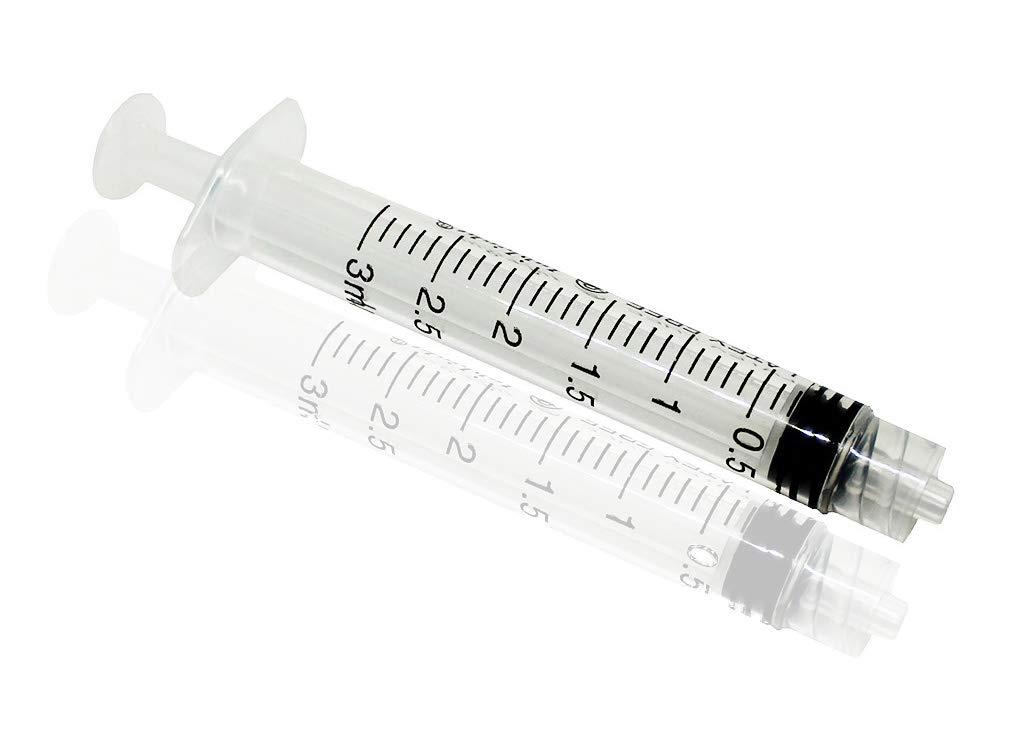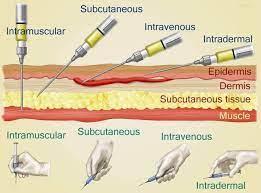Which equipment should the nurse use to measure a 5 mL dose of viscous liquid solution most accurately to be administered orally?
One ounce medicine cup.
3 mL syringe and a sterile needle.
3 mL syringe.
Tuberculin syringe.
The Correct Answer is C
Choice A Reason: This is incorrect because a one ounce medicine cup is not precise enough to measure a 5 mL dose of viscous liquid solution. A one ounce medicine cup can hold about 30 mL of liquid, which is too large for a small dose.
Choice B Reason: This is incorrect because a 3 mL syringe and a sterile needle is not appropriate for oral administration of medication. A needle may cause injury to the oral mucosa or the esophagus.
Choice C Reason: This is correct because a 3 mL syringe can measure a 5 mL dose of viscous liquid solution accurately and safely. A syringe can draw up the solution easily and deliver it to the mouth without spilling or dripping.
Choice D Reason: This is incorrect because a tuberculin syringe is too small to measure a 5 mL dose of viscous liquid solution. A tuberculin syringe can hold only 1 mL of liquid, which is not enough for the required dose.

Nursing Test Bank
Naxlex Comprehensive Predictor Exams
Related Questions
Correct Answer is C
Explanation
Choice A Reason: This is incorrect because instilling normal saline solution into the nasogastric tube can cause fluid overload, electrolyte imbalance, or aspiration. Clamping the tube for one hour can also increase the risk of aspiration and gastric distension.
Choice B Reason: This is incorrect because turning the suction off can cause gastric distension and discomfort. Rinsing the mouth with cool water can also increase the risk of aspiration if the client swallows some of the water.
Choice C Reason: This is correct because oral sponge toothettes are soft and gentle on the oral mucosa and can help moisten and cleanse the mouth without causing irritation or aspiration.
Choice D Reason: This is incorrect because teaching the client that the oral mucosa must remain dry is false and can lead to further dryness, cracking, bleeding, and infection. The oral mucosa should be kept moist and clean to prevent these complications.
Correct Answer is D
Explanation
Choice A Reason: Massaging the injection site can cause bruising and bleeding, and is not recommended for subcutaneous heparin injections.
Choice B Reason: Rotating injections between different body sites can increase the risk of hematoma formation and skin irritation, and is not advised for subcutaneous heparin injections.
Choice C Reason: Expelling the air in the prefilled syringe can result in a loss of medication dose, and is not necessary for subcutaneous heparin injections.
Choice D Reason: Injecting in the abdominal area at least 2 inches from the umbilicus is the correct technique for subcutaneous heparin injections, as it reduces the risk of injury to blood vessels and nerves, and ensures consistent absorption of the medication.

Whether you are a student looking to ace your exams or a practicing nurse seeking to enhance your expertise , our nursing education contents will empower you with the confidence and competence to make a difference in the lives of patients and become a respected leader in the healthcare field.
Visit Naxlex, invest in your future and unlock endless possibilities with our unparalleled nursing education contents today
Report Wrong Answer on the Current Question
Do you disagree with the answer? If yes, what is your expected answer? Explain.
Kindly be descriptive with the issue you are facing.
